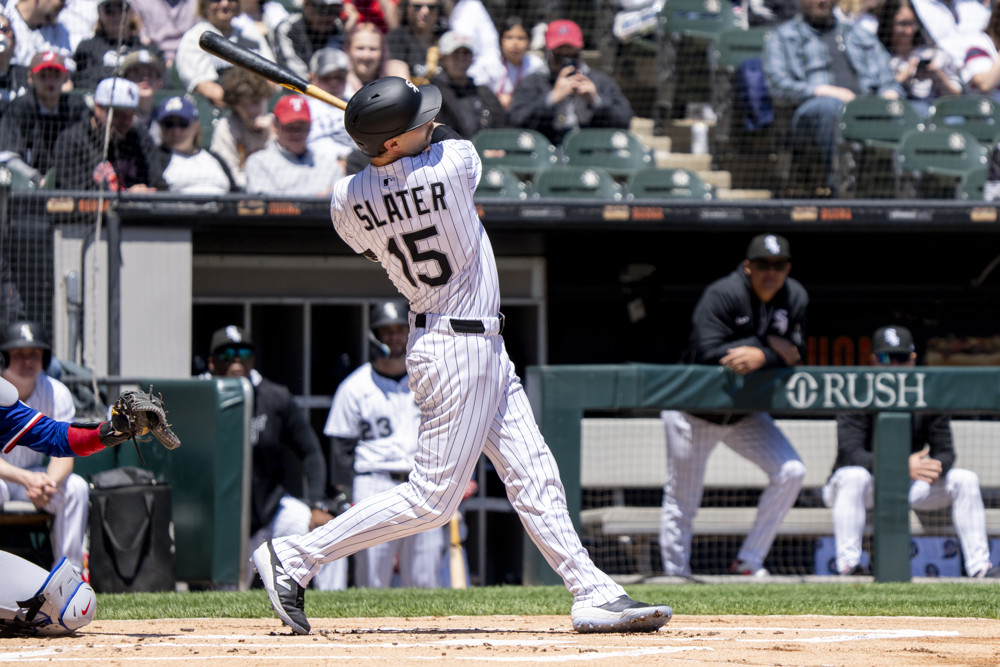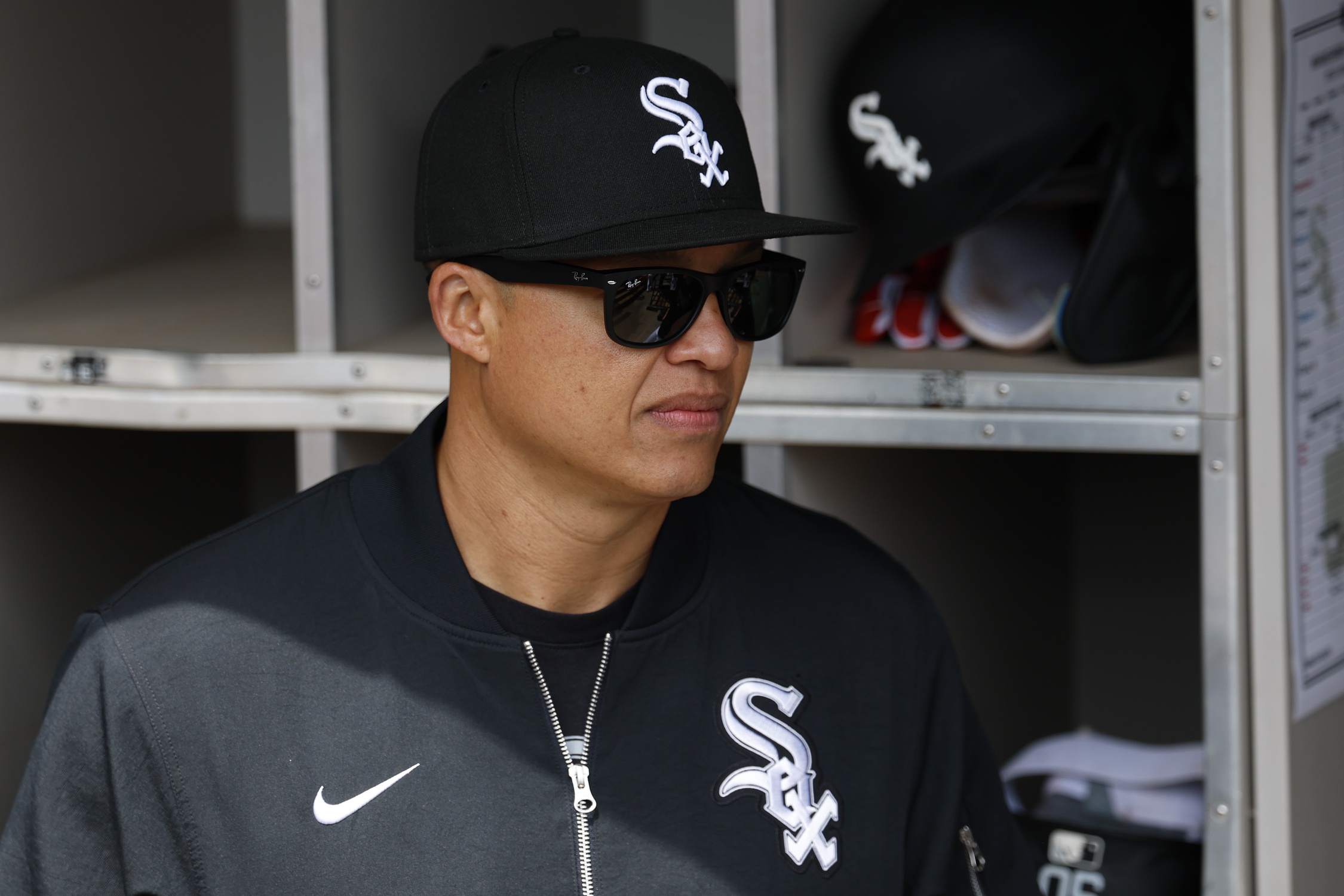In talking to reporters after signing his one-year, $1.75 million contract back in November, Austin Slater triggered an avalanche of cynicism when he said the White Sox "told me I was their top target."
Well it's mid-May, and Slater is leading all White Sox with a .916 OPS. Mike Tauchman, who signed a slightly larger deal during the winter meetings three weeks later to serve as the long side of a platoon with Slater, is right behind him at .909. Perhaps a lot of people owe Chris Getz an apology?
Of course not. At least not yet.
Here's the place to note that the two-headed Plan A for right field has combined for 51 plate appearances over the team's first 53 games due to leg injuries, so they wouldn't come close to qualifying for the batting title even if you treated them as one person. But as the White Sox finally made it through one weekend with all of their offseason position player additions fully operational, it brings a new purpose to watching the White Sox on a daily basis.
It's still not the most scintillating time to be doing so, since Miguel Vargas, Chase Meidroth and Edgar Quero are the only non-pitchers who figure to be members of the next contending White Sox team. But it was only a few weeks ago that Nick Maton and Jake Amaya were among the top nine in plate appearances. That only reflected the desperation in finding anybody worth standing in a major league batter's box thanks to Slater's knee and Tauchman's hamstring, along with Josh Rojas' broken toe, and Andrew Benintendi's on-again, off-again relationship with the injured list didn't help matters either.
Now that everybody is back, this weekend basically marked the start of finding out whether Chris Getz and the White Sox front office is any better at discovering stopgap solutions.
The compressed timeline has changed the mission, and not every veteran is as critical as before. Rojas' ability to cover three infield positions was most valuable in April, but since Vargas and Meidroth both staked claims to jobs on the left side of the field, and Rojas' defense has been surprisingly clumsy early on, he's no longer the most trustworthy option at multiple spots. Michael A. Taylor's signing only really pays off as insurance for a Luis Robert Jr. trade, and Robert hasn't accelerated that process. Even Matt Thaiss, who is running a .382 OBP while being acceptable at all facets of catching, is easy to dismiss as a league-average obstacle to greater ambitions with Quero holding his own, Kyle Teel waiting in the wings, and Korey Lee being a weird, high-ceiling kind of fourth catcher. Thaiss has basically already succeeded at his job, and now it's a matter of when other teams start wanting his services.
Nothing has changed for Slater and Tauchman, however. The lack of upper-level outfield prospects is what led Getz to enter the season with five veterans under MLB contracts, and nobody credible emerged during all the injuries (Brooks Baldwin still leads in the White Sox in left field innings, and Joshua Palacios in right). The White Sox signed them with the idea of putting their OBPs toward the top of the order, and that they'd hit for enough power and play enough defense to support it. It took a month and a half to see their first whole series of coexisting, but their weekend's work against Texas is what it's supposed to look like:
| Player | PA | H | HR | BB | K | AVG/OBP/SLG |
|---|---|---|---|---|---|---|
| Tauchman | 11 | 2 | 1 | 2 | 0 | .222/.364/.556 |
| Slater | 5 | 2 | 1 | 1 | 1 | .500/.600/1.750 |
| Total | 16 | 4 | 2 | 3 | 1 | .307/.437/.923 |
The numbers are slightly boosted by Slater being credited with a triple after Wyatt Langford and Sam Haggerty collided on the warning track on Saturday, but Slater hit that ball hard (102.5 mph), and then he hit a ball even harder over the fence on Sunday, so he was rewarded for his process. Considering White Sox hitters are suffering through the league's third-lowest BABIP, somebody has to benefit from random luck once in a while.
It's easy to write off veteran-boosted production as cheap heat and wave away any greater significance, but while the urgency with which Getz signed Slater and Tauchman to such modest deals made their arrivals a sad commentary on the state of White Sox finances, it also gave their signings the weight of actual intent. With Ryan Fuller on board, the White Sox thought they had a way of getting Slater back on track. With Tauchman, they envisioned a positive complement to so many things they were trying to do, whether in regards to right field, the lineup's overall plate approach, or a healthier clubhouse. If they manage to get these two signings right, 1) they'll play their way onto other rosters by the end of July, and 2) it'll require everybody to take future modest bets a little more seriously. Jerry Reinsdorf can't be counted upon to shell out big bucks when it counts, so Getz & Co. will have to get better at making modest upgrades. These years provide the opportunity for valuable practice.
That said, the fact that Slater and Tauchman haven't averaged even one plate appearance per team game makes the other side of the coin equally apparent. The tough thing about relying on a platoon from Opening Day is that it requires both sides to be functioning at the same time, and Slater's injury history in particular adds to the degree of difficulty. Their performances against the Rangers could merely be an upward tick in a long downward slide, which is something to which White Sox fans have grown accustomed.
It's easy to question the point of watching guys who won't be hanging around, but as long as the White Sox farm system poses no compelling alternatives behind them in the outfield, there's no downside to watching whether Slater and Tauchman can make up for lost time. This weekend showed what the White Sox were trying to do, even if the rest of the season up until this point indicated that more resources will be necessary.






